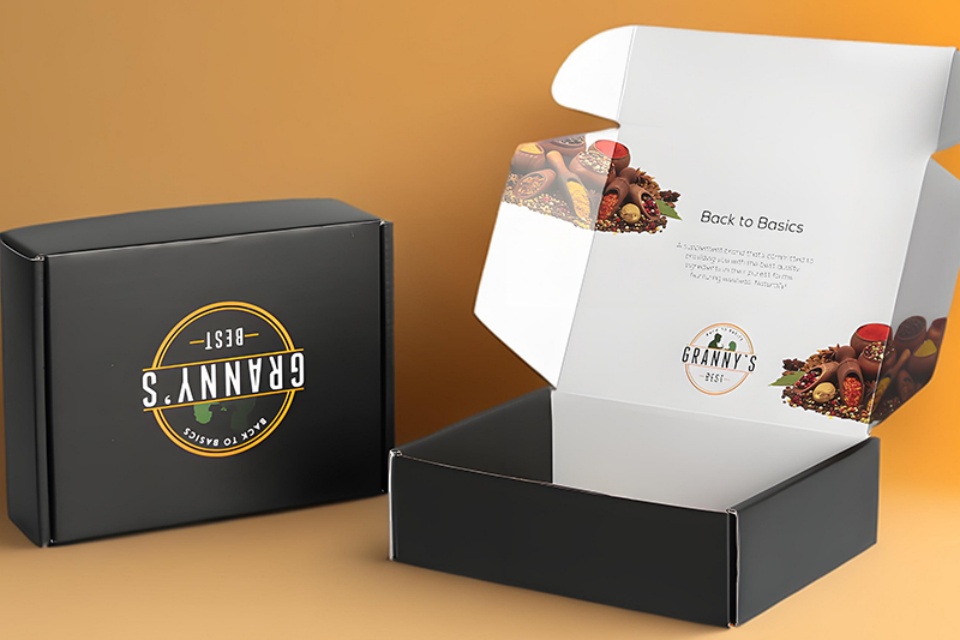Advantages Of Corrugated For Shipping
Advantages Of Corrugated For Shipping
Summary
Lead Section: Advantages of Corrugated for Shipping Corrugated packaging, widely recognized for its lightweight and durable structure, has become a preferred choice for businesses and consumers in the shipping industry. Comprising three layers—an outer paperboard layer, a middle layer of corrugated material, and an inner paperboard layer—this packaging solution offers exceptional protection for products during transit and storage, effectively safeguarding items from damage. Its notable strength and cushioning properties make it particularly advantageous for shipping fragile goods, establishing corrugated packaging as an essential component in logistics and supply chain management.
One of the key benefits of corrugated packaging is its cost-effectiveness. Its lightweight nature not only reduces transportation costs but also minimizes carbon emissions associated with shipping, making it an economical choice for companies looking to optimize logistics operations. Furthermore, the customizable design of corrugated boxes allows businesses to tailor packaging solutions to meet specific product dimensions, thus reducing waste and enhancing efficiency. High-quality printing options also enable brand promotion, making corrugated packaging an effective marketing tool.
Despite its advantages, corrugated packaging does have limitations, particularly its susceptibility to moisture, which can compromise structural integrity in adverse conditions. Additionally, while generally robust, corrugated boxes can lose shape under excessive pressure, necessitating careful handling and storage practices. These concerns underline the importance of understanding the conditions in which corrugated packaging will be used to ensure optimal performance.
The environmental impact of corrugated packaging has gained increasing attention, with many businesses embracing it as a more sustainable alternative to plastic. Made from recyclable materials, corrugated packaging aligns with growing consumer preferences for eco-friendly products. The corrugated industry has made significant strides in reducing greenhouse gas emissions and increasing recycling rates, positioning corrugated packaging as both a responsible and efficient choice for modern shipping needs.
Benefits of Using Corrugated Packaging
Corrugated packaging offers numerous advantages that make it a preferred choice for businesses and consumers alike. Its lightweight yet durable structure provides significant protection for products during shipping and storage, ensuring they arrive in optimal condition. The design of corrugated cardboard consists of three layers: an outer layer of paperboard, a middle layer of corrugated material, and an inner layer of paperboard, which together enhance the packaging's strength and cushioning capabilities.
Lightweight and Cost-Effective
One of the primary benefits of corrugated packaging is its lightweight nature, which reduces transportation costs and minimizes emissions associated with shipping. This lightweight characteristic allows for easy handling and packing without compromising on strength, making it an economical choice for companies shipping a variety of products.
Durability and Protection
Corrugated packaging is known for its durability and protective qualities. It can be designed to be tear-proof and crush-proof, which is particularly advantageous in rough shipping environments where other types of packaging might fail. The fluted layer within corrugated boxes acts like a shock absorber, providing excellent cushioning against impacts. This feature is essential for shipping fragile items, as the design ensures that products are safeguarded from damage during transit.
Customization and Branding
Another significant advantage of corrugated packaging is its versatility and potential for customization. Businesses can create boxes tailored to the specific size, shape, and protection needs of their products, thereby minimizing waste and enhancing affordability. Additionally, corrugated boxes can be printed with high-quality graphics, making them an effective medium for brand promotion and customer engagement.
Environmental Considerations
Corrugated packaging is also eco-friendly, as it is made from recyclable materials that are less harmful to the environment than other packaging options. The trend towards lightweighting in the industry not only reduces raw material consumption but also decreases fuel usage during transportation, aligning economic benefits with environmental sustainability. This makes corrugated packaging a responsible choice for businesses looking to reduce their environmental footprint.
Limitations
Despite its many benefits, corrugated packaging does have some limitations. It is not weatherproof and can be susceptible to moisture, which may compromise its structural integrity if exposed to extreme conditions. Additionally, while corrugated boxes are generally strong, they can lose shape under excessive pressure, necessitating careful handling and storage considerations.
Environmental Impact
The environmental impact of packaging materials has become a significant concern as companies strive to reduce their carbon footprints and embrace sustainable practices. Two common packaging materials, cardboard and plastic, exhibit contrasting environmental profiles.
Cardboard
Cardboard is often promoted as a more environmentally friendly alternative to plastic due to its biodegradability and recyclability. It is primarily made from wood pulp, a renewable resource, and can be easily recycled into new cardboard or other paper products. In fact, approximately 93% of corrugated products are recovered and recycled in the U.S. The corrugated packaging industry has made substantial strides in reducing its environmental impact since 2006, achieving nearly a 50% reduction in greenhouse gas emissions, as well as significant decreases in other environmental indicators such as ozone depletion (13%), smog (44%), and water usage (18%).
However, the production of cardboard is not without environmental costs. It requires considerable amounts of water and energy and can contribute to deforestation if not sourced sustainably. Moreover, cardboard decomposing in landfills produces methane, a greenhouse gas that is over 20 times more potent than carbon dioxide when released into the atmosphere.
Plastic
In contrast, plastic packaging presents a considerable environmental challenge due to its non-biodegradable nature. Although plastic is recyclable, the actual recycling rate is alarmingly low, with only about 9% of plastic being recycled globally. The complexities of recycling various types of plastic, combined with issues like contamination during the recycling process, often lead to significant amounts of plastic waste ending up in landfills or natural environments, where it can persist for hundreds of years.
While the plastic industry has made some efforts to improve recycling infrastructure, the environmental impact remains stark, with plastic contributing approximately 4.5% to global greenhouse gas emissions, compared to cardboard's much lower 0.8%.
Versatility
Corrugated packaging exhibits remarkable versatility across various industries, making it an ideal choice for shipping solutions. Its lightweight and strong construction allows for the safe transport of a wide range of goods, ensuring they arrive without damage. The inherent flexibility of corrugated boxes facilitates customization, enabling manufacturers to tailor their packaging to fit specific product dimensions, thereby reducing wasted space and improving shipping efficiency.
Customization Options
Corrugated boxes can be easily customized through printing and branding, which significantly enhances the customer experience. The ability to incorporate logos and designs not only improves brand awareness but also adds value to the unboxing experience. Additionally, the design of corrugated packaging can accommodate various shapes and sizes, making it suitable for shipping unusually shaped items without compromising product safety.
Industry Applications
In the food and beverage sector, corrugated packaging provides hygienic containment and sturdy protection, crucial for maintaining freshness and safety standards. Companies like Starbucks exemplify how corrugated materials not only preserve product quality but also enhance brand visibility through visually appealing designs. In the pharmaceutical industry, the durability of corrugated materials protects sensitive medical products during transit, while consumer goods manufacturers benefit from customizable solutions that cater to diverse marketing needs.
Sustainability Considerations
As consumer preferences shift toward eco-friendly solutions, the versatility of corrugated packaging extends to its sustainability features. Many consumers are inclined to choose products packaged in environmentally friendly materials, prompting companies to adopt recyclable options to stay competitive in a green market. The customization and design possibilities allow for the use of sustainable materials while maintaining efficiency and functionality in packaging.
Cost-Effectiveness
Corrugated packaging offers a range of cost-effective advantages for businesses engaged in shipping and logistics. The economic benefits associated with corrugated solutions can be attributed to several factors, including reduced material costs, waste management savings, and the lightweight nature of the material, which lowers transportation expenses.
Material Cost Savings
One of the key economic advantages of using corrugated packaging lies in its cost-effectiveness compared to other materials. Corrugated cardboard is less expensive than many alternatives, providing strong protection for goods while remaining lightweight. This dual advantage translates into lower shipping costs, as carriers often charge based on weight and dimensional size.
Waste Management and Recycling Benefits
Implementing a comprehensive corrugated recycling program can lead to significant cost savings for businesses. By diverting cardboard waste from landfills, companies can reduce their waste disposal fees, which are often substantial for businesses that generate large volumes of cardboard waste. Additionally, recycling corrugated materials can generate revenue by allowing businesses to sell recycled cardboard to recycling companies or paper mills, thus offsetting the costs of implementing a recycling program.
Efficient Use of Resources
The lightweight nature of corrugated packaging not only contributes to reduced transportation costs but also enhances overall resource efficiency. The lower weight of corrugated boxes means that more items can be shipped at once, optimizing shipping loads and further driving down costs. Furthermore, the rapid decomposition rate of corrugated cardboard, taking only about 60 days to decompose compared to the hundreds of years for plastics, underscores its sustainability and cost-effectiveness in the long term.
Performance Testing and Standards
The performance of corrugated boxes is assessed through rigorous testing standards and certifications to ensure they meet expectations for durability, safety, and handling. Key factors evaluated during these tests include moisture content, box design and dimensions, and overall manufacturing quality.
Standard Testing Methods
Several standardized tests are employed to measure the strength and durability of corrugated boxes, including:
Edge Crush Test (ECT)
The Edge Crush Test (ECT) evaluates the edgewise compressive strength of corrugated board, determining its resistance to crushing forces applied perpendicular to the flutes. The results are reported as an ECT value, indicating the maximum load-bearing capacity of the board in pounds per lineal inch.
Mullen Burst Test
The Mullen Burst Test measures the force required to rupture or puncture the face of the corrugated board when pressure is applied. This test is crucial for assessing the board's ability to withstand rough handling, and the results are reported in pounds per square inch (PSI).
Box Compression Test (BCT)
The Box Compression Test (BCT) determines the maximum load a box can withstand before collapsing. This test simulates the conditions the box will face during shipping and storage, providing insights into its stackability and strength under pressure.
Additional Testing
Beyond standardized tests, companies may also conduct specialized assessments tailored to specific products and shipping environments.
- Environmental Conditioning: This involves exposing boxes to extreme temperatures and humidity to replicate real-world storage and transit conditions.
- Stacking Tests: Long-term stacking tests assess the gradual deformation of boxes under load over time.
- Package-Product Interaction Tests: These tests evaluate how the product itself interacts with its packaging, ensuring compatibility and protection.
Influencing Factors
The results of these tests can be influenced by several factors, including board grade, flute profile, and combined board thickness. For instance, the type and quality of the paper used significantly impact strength, while the shape and size of the corrugated medium determine stacking strength and cushioning capabilities.



